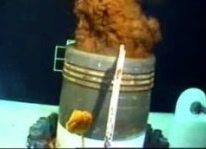
By Alanna Brown, LuxEco Editorial Assistant
It seems BP has finally begun to make good on weeks of promise to fix the Deepwater Horizon wellhead that has been gushing crude oil into the Gulf Coast. It has taken nearly 3 months for them to initiate a plan that might hold back the oil, but at last, crews worked through the weekend and fitted a new 150,000-pound cap to the wellhead on Monday. They began tests Tuesday, which may take up to 48 hours, to see if the cap will be strong enough to temporarily contain the oil and gases.
However, BP doesn’t want people getting their hopes up. “The sealing cap system never before has been deployed at these depths or under these conditions,” the company stated, “and its efficiency and ability to contain the oil and gas cannot be assured.”
And even if the cap does work, this is not a permanent fix. The oil will not be assured to stop surging into the ocean until a relief well makes contact with the oil source. Two relief wells are currently being constructed and are not expected to be finished until mid-August. Once that happens, the broken well will be permanently sealed with drilling mud and cement.
Certainly, if we are amid the last days of this oil pouring into the Gulf by the thousands of gallons, we will all celebrate. But even then, we are only facing the beginning of the end. There will be months of cleanup ahead and years of economic and environmental repercussions. Fishing and beach tourism industries have already been devastated, and marine life has indubitably suffered and begun to die off.
According to Tony Wood, director of the National Spill Control School at Texas A&M-Corpus Christi, the mousse-like brown stuff residents are seeing wash ashore will keep coming for several months. “It will still be getting on people’s feet on the beaches probably a year or two from now,” Wood said. Only over time will it begin to break down and slowly decrease in volume.
In the interim, we can only hope that this temporary solution works until a permanent solution is put into place.
To read more on this, visit The Huffington Post.












